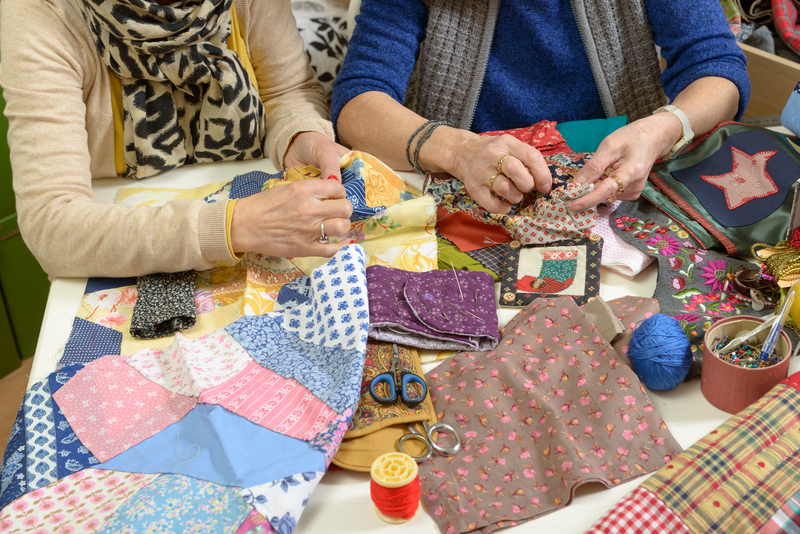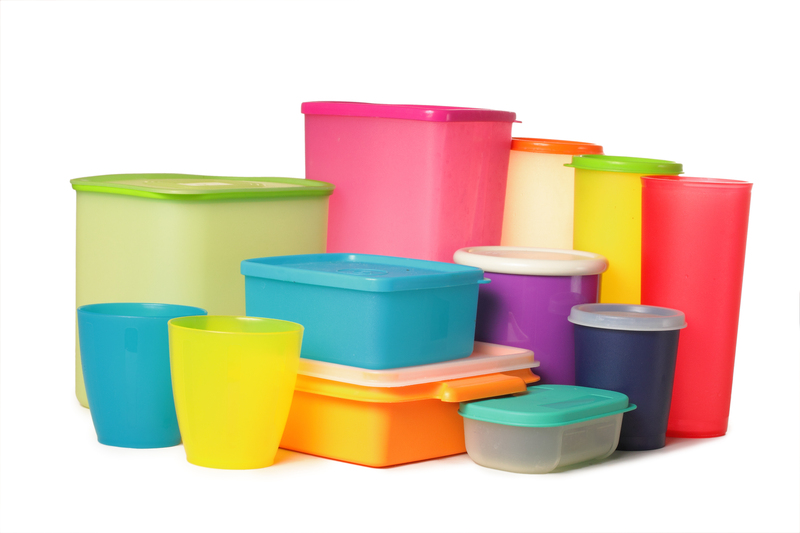Upcycling for a Better Planet: Make the Most of What Others Toss Out
Upcycling is transforming our approach to waste. With pollution, landfill overflow, and resource shortages dominating modern environmental concerns, rethinking waste management has become more essential than ever. Upcycling for a better planet is not just a catchy phrase--it's a practical approach to sustainability that empowers individuals and communities to turn what others discard into valuable, purposeful items. In this comprehensive guide, learn how you can make the most of what others toss out, contributing to a greener, cleaner future for everyone.
What is Upcycling? Understanding the Concept
Upcycling is the creative process of giving new life to discarded materials by converting them into higher-quality or more functional items. Unlike recycling--which typically breaks materials down to their raw form--upcycling retains much of the original material's value, reducing energy use and environmental impact. This sustainable practice can involve everything from furniture restoration and clothing modification to DIY home decor projects.
The Difference Between Upcycling and Recycling
- Recycling: Material is broken down (e.g., paper pulped, plastic melted) and re-manufactured, often at energy cost.
- Upcycling: Materials are reused as-is or with minimal processing, preserving much of their original form and structure.
Upcycling focuses on creativity and value addition, while recycling is primarily about material recovery.

Why is Upcycling Important for a Better Planet?
When you upcycle, you help reduce the amount of waste sent to landfills, conserve natural resources, and limit the pollution caused by manufacturing new products. Here are some key environmental benefits of upcycling for a sustainable future:
- Reduces landfill waste: By transforming trash into treasure, fewer items end up in landfills.
- Minimizes resource consumption: Reduces the need for raw materials and saves water, energy, and other resources.
- Lowers greenhouse gas emissions: Less energy is used compared to producing new products from scratch.
- Encourages creative thinking: Inspires innovation and problem-solving for a sustainable lifestyle.
Upcycling for a better planet plays a critical role in addressing current global environmental challenges.
Popular Upcycling Ideas: Give New Life to Old Materials
Anyone can participate in upcycling. Whether you live in a city apartment or a rural home, here are several creative ideas that make the most of what others toss out:
1. Upcycled Furniture Projects
- Pallet Wood Furniture: Use discarded pallets to build rustic coffee tables, benches, or headboards.
- Repurposed Drawers: Turn old dresser drawers into unique wall shelves or under-bed storage units.
- Chair Redesigns: Reupholster or paint old chairs for a fresh, custom look.
2. Upcycled Clothing and Accessories
- T-Shirt Tote Bags: Convert worn-out shirts into handy reusable grocery bags.
- Denim Patchwork: Stitch denim scraps into quilts, cushion covers, or even trendy jackets.
- Button Jewelry: Transform orphan buttons into eye-catching necklaces or earrings.
3. Upcycling for Home Decor
- Glass Jar Vases: Repaint or decorate glass jars for flower arrangements or storage.
- Wine Bottle Lamps: Use empty bottles as the base for stylish table lamps.
- Book Planters: Hollow out old, damaged books to create quirky plant holders.
How to Start Upcycling: Tips for Beginners
If you're interested in upcycling for a better planet but don't know where to begin, these tips will get you started:
- Start Small: Begin with simple projects like upcycling glass jars or t-shirts.
- Get Inspired: Search for upcycling ideas on social media platforms like Pinterest or Instagram.
- Gather Materials: Save everyday items (bottles, cans, boxes) and keep an eye out for curbside cast-offs.
- Use Safe Tools: Equip yourself with basic safety gear and use appropriate tools for each project.
- Share Your Creations: Inspire others by showing your upcycled masterpieces online or at local craft fairs.
The Environmental Impact of Upcycling
Across the globe, billions of tons of waste are sent to landfills every year. By embracing upcycling for a sustainable earth, individuals and businesses can:
- Reduce landfill emissions: Waste in landfills produces methane, a potent greenhouse gas.
- Conserve ecosystems: Less demand for raw resources results in less habitat destruction.
- Support the circular economy: By circulating materials in the economy for longer, upcycling aligns with circular economy principles.
Upcycling not only lessens environmental harm but also raises awareness about the unsustainable consumption habits of modern society.
Creative Upcycling at Home: Practical Examples
Upcycled Kitchen Solutions
- Old Cutlery Hooks: Bend old forks and spoons to create unique hooks for aprons or towels.
- Tin Can Containers: Decorate empty cans for desk organizers or utensil holders.
- Bottle Cap Magnets: Glue magnets to bottle caps for colorful fridge accessories.
Garden Upcycling Ideas
- Tire Planters: Paint and stack worn-out tires as raised garden beds.
- Milk Jug Watering Cans: Punch holes in the cap to turn old jugs into handy watering cans.
- Pallet Compost Bins: Use discarded wood pallets to build a backyard compost system.
These practical ideas turn waste into wealth--demonstrating the power of upcycling to create a better planet.
Community-Based Upcycling Initiatives
Local upcycling programs can multiply the environmental, social, and economic benefits. Neighborhood "swap shops," school art programs, and community repair cafes bring people together to exchange materials and knowledge. Here's how communities can foster upcycling for sustainable living:
- Host upcycling workshops to teach residents new skills.
- Set up donation bins for reusable materials like fabric, furniture, and electronics.
- Organize upcycled art shows to celebrate creativity and environmental stewardship.
Collaborative upcycling strengthens community ties while reducing collective waste and promoting environmental values.
Upcycling and the Circular Economy
Upcycling is a pivotal part of the circular economy, a system where materials are continuously repurposed to minimize waste. Here's how upcycling contributes:
- Keeps materials in use: Reduces the need for new raw resources.
- Prevents excessive waste generation: Ensures items are used until the end of their practical life.
- Empowers local economies: Sparks entrepreneurial opportunities for artisans and small businesses focused on sustainable goods.
By making the most of what others toss out, we collectively design out waste and pollution, creating a more sustainable economic system for future generations.
Upcycling Success Stories: Transforming Trash into Treasure
Recycled Skateboard Artisans
Some creative entrepreneurs collect broken skateboards and upcycle them into vibrant jewelry and home accents, giving discarded wood a second life while reducing landfill burden.
Plastic Bottle Houses
Innovators around the world have built entire structures from used plastic bottles. These upcycled homes offer affordable shelter and greatly reduce plastic pollution.
Furniture from Old Aircraft
Companies have transformed retired aircraft parts into high-end furniture--like airplane wing desks or jet engine coffee tables--showcasing how upcycling for a better planet can be both stylish and eco-friendly.
Challenges and Limitations of Upcycling
While upcycling brings countless benefits, there are some challenges to address:
- Access to materials: Not every community has easy access to reusable waste streams.
- Skills gap: Some upcycling projects require basic craft or technical skills.
- Market for upcycled products: While growing, some consumers still prefer new items over upcycled alternatives.
- Time constraints: DIY upcycling can be time-consuming compared to buying new products.
Despite these hurdles, the rising awareness of environmental issues is encouraging more individuals and businesses to embrace upcycling practices.
How to Spread the Upcycling Movement
You can help grow the upcycling movement and further the goal of a greener planet:
- Educate others: Share your upcycling stories and successes on social media.
- Support local artisans: Purchase upcycled goods from small businesses and craftspeople.
- Advocate for sustainable policies: Encourage schools, governments, and companies to implement upcycling initiatives.
- Volunteer: Join or host community clean-ups and repurposing projects.
Every small act counts. The more people participate in upcycling for a better environment, the more significant the collective impact.

Upcycling Resources: Where to Learn and Get Involved
- Online forums: Participate in upcycling communities on Reddit, Facebook, or dedicated websites.
- Tutorial blogs and YouTube channels: Find step-by-step instructions for hundreds of upcycling projects.
- Local classes and workshops: Community centers often offer courses on creative reuse and sustainable crafts.
- Eco-friendly markets: Visit farmers' markets or craft fairs to discover upcycled products and connect with makers.
Conclusion: Make a Difference--Upcycle for a Better Planet
Upcycling for a better planet isn't just about reusing--it's about reimagining. By making the most of what others toss out, you become part of a movement redefining waste as a resource and inspiring innovation for a sustainable future.
Each upcycled project, no matter how small, adds up to big environmental gains. By embracing creative reuse, sustainable living, and the circular economy, we can all make the most of what others throw away, reduce our ecological footprint, and help build a cleaner, greener, and more hopeful planet for generations to come.
